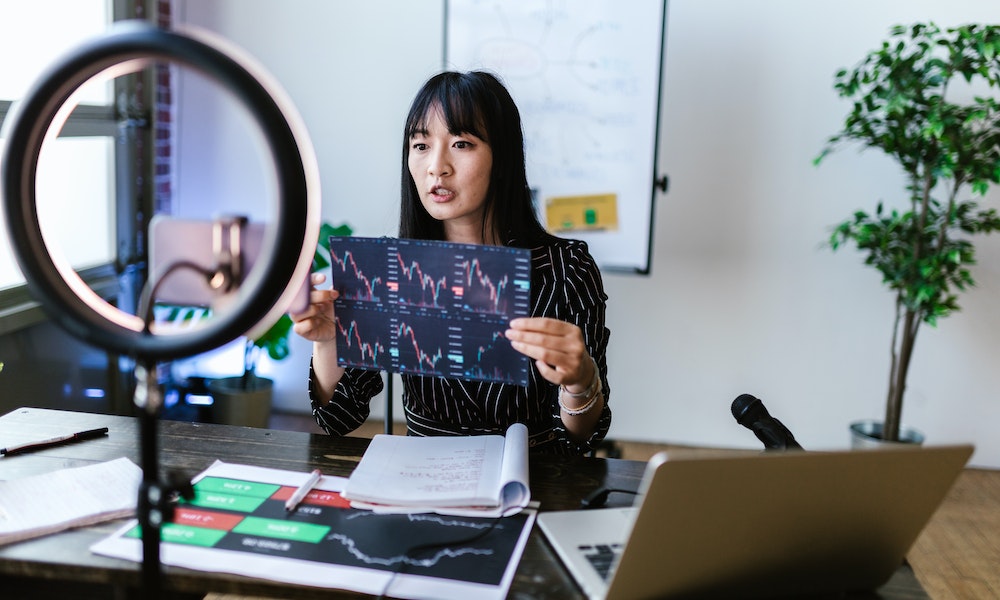5 Important Potential of Blockchain in Education

Blockchain in Education, Blockchain technology has been revolutionizing various industries, and its potential applications in education are becoming increasingly evident. With its decentralized and transparent nature, blockchain holds immense promise to transform the education sector in multiple ways. In this article, we will explore five important potentials of blockchain in education and discuss how they can benefit students, institutions, and the entire learning ecosystem.
In recent years, the education sector has been grappling with challenges related to security, privacy, and trust. Traditional methods of record-keeping and verification are often cumbersome, time-consuming, and prone to fraud. However, blockchain technology offers a decentralized and immutable solution to these issues. By leveraging blockchain, educational institutions can enhance credentialing and certification, secure record-keeping, streamline verification processes, implement tokenization and rewards systems, and empower peer-to-peer learning and collaboration.
Read More: 6 Important Roles of EdTech in Promoting Digital Literacy
Understanding Blockchain Technology
Before delving into the potential of blockchain in education, it is crucial to have a basic understanding of the technology itself. At its core, blockchain is a distributed ledger that records transactions across multiple computers, ensuring transparency, security, and immutability. Each transaction is stored in a block, which is linked to the previous block, forming a chain. The decentralized nature of blockchain eliminates the need for intermediaries, making it highly efficient and resistant to tampering.
Potential of Blockchain in Education
Enhancing Credentialing and Certification
Blockchain technology has the potential to revolutionize the way educational credentials and certifications are managed. By utilizing blockchain, educational institutions can issue digital credentials and store them in a decentralized manner. These digital credentials, often called “blockchain-based badges,” can be verified instantly and securely, eliminating the need for lengthy verification processes. Moreover, individuals can have complete control over their credentials, sharing them with prospective employers or educational institutions as needed.

Secure and Transparent Record Keeping
One of the significant advantages of blockchain technology is its ability to ensure secure and transparent record-keeping. Educational records, such as academic transcripts, degrees, and certificates, can be stored on the blockchain, making them tamper-proof and easily verifiable. This eliminates the risk of document forgery and allows employers, educational institutions, and other stakeholders to access authenticated records with confidence.
Efficient and Trustworthy Verification Processes
Blockchain in Education, Verifying educational qualifications is often a time-consuming and complex process. Blockchain can streamline this process by providing a decentralized and trustworthy verification mechanism. Instead of relying on manual verification methods, employers or educational institutions can directly access the blockchain to verify the authenticity of credentials. This reduces administrative burdens, enhances efficiency, and ensures the accuracy of verification results.
Tokenization and Rewards Systems
Blockchain technology can also enable the implementation of tokenization and rewards systems in education. By tokenizing educational achievements, students can earn digital tokens or coins for their academic performance, participation in extracurricular activities, or other accomplishments. These tokens can be used to unlock additional learning opportunities, access specialized resources, or even trade with other students. Tokenization encourages motivation, engagement, and a sense of achievement among students, fostering a positive learning environment.
Empowering Peer-to-Peer Learning and Collaboration
Blockchain technology has the potential to facilitate peer-to-peer learning and collaboration among students. By leveraging blockchain, educational platforms can be developed where students can share their knowledge, collaborate on projects, and even create educational content. Blockchain-based platforms can ensure the authenticity of shared resources, encourage active participation, and reward contributors. This democratizes the learning process, allowing students to learn from one another and develop valuable skills through collaboration.
Challenges and Considerations
Blockchain in Education, While the potential of blockchain in education is vast, several challenges and considerations need to be addressed for successful implementation.

Scalability and Performance
Blockchain technology currently faces scalability and performance limitations. As the number of transactions increases, the blockchain network’s speed and efficiency may decrease. However, ongoing research and development efforts are focused on improving scalability through technologies like sharding and layer-two solutions.
Data Privacy and Security
Blockchain in Education, Blockchain operates on a transparent and immutable ledger, which can raise concerns regarding data privacy. Educational institutions must carefully consider the privacy implications of storing sensitive student data on the blockchain. Ensuring compliance with relevant data protection regulations and implementing privacy-enhancing techniques can mitigate these concerns.
Regulatory and Legal Implications
The integration of blockchain in education may raise regulatory and legal challenges. Educational institutions need to navigate the legal landscape, address intellectual property concerns, and ensure compliance with existing regulations. Collaborative efforts between policymakers, educational institutions, and blockchain experts are crucial to establish clear frameworks and guidelines.
Adoption and Integration
The successful implementation of blockchain in education requires widespread adoption and integration with existing systems. Educational institutions must invest in the necessary infrastructure, provide training and support to staff and students, and address any resistance to change. Collaboration between institutions, industry stakeholders, and technology providers is essential to drive adoption and ensure seamless integration.
Case Studies and Real-World Applications
Several initiatives have already explored the potential of blockchain in education. For instance, the Massachusetts Institute of Technology (MIT) has developed an open-source platform called “Blockcerts” that allows individuals to issue and verify blockchain-based credentials. Additionally, the Holberton School, a software engineering academy, has integrated blockchain technology to issue academic certificates and ensure their authenticity.
Future Outlook
The future of blockchain in education is promising. As the technology continues to evolve and mature, it has the potential to reshape the entire education landscape. From credentialing and record-keeping to personalized learning and collaboration, blockchain can enhance various aspects of education. However, realizing this potential requires collaboration, experimentation, and a forward-thinking approach from educational institutions, policymakers, and industry stakeholders.
Conclusion
Blockchain technology holds significant promise in revolutionizing the education sector. By enhancing credentialing, ensuring secure record-keeping, streamlining verification processes, implementing tokenization and rewards systems, and empowering peer-to-peer learning, blockchain can bring about positive changes in education. However, challenges related to scalability, privacy, regulation, and adoption must be carefully addressed. With proper planning and collaboration, blockchain can pave the way for a more efficient, transparent, and inclusive education system.
Read More: 7 Important impact of EdTech on higher education
Frequently Asked Questions (FAQs)
How does blockchain ensure the security of educational records?
Blockchain ensures the security of educational records by leveraging its decentralized and immutable nature. Once a record is stored on the blockchain, it cannot be tampered with or modified without consensus from the network participants. This eliminates the risk of fraud or unauthorized changes to educational records, ensuring their authenticity and integrity.
Can blockchain be integrated into existing educational systems?
Yes, blockchain can be integrated into existing educational systems. However, it requires careful planning, investment in infrastructure, and collaboration between educational institutions, technology providers, and other stakeholders. Integration may involve developing blockchain-based platforms, implementing standards for interoperability, and training staff and students on the use of blockchain technology.
Are there any examples of blockchain being used in education?
Yes, there are several examples of blockchain being used in education. For instance, educational institutions like the Massachusetts Institute of Technology (MIT) have developed blockchain-based credentialing systems such as “Blockcerts.” Similarly, the Holberton School has integrated blockchain technology to issue and verify academic certificates.
What are the potential drawbacks of implementing blockchain in education?
Some potential drawbacks of implementing blockchain in education include scalability and performance limitations, privacy concerns related to storing sensitive data on a transparent ledger, regulatory and legal challenges, and the need for widespread adoption and integration with existing systems. These challenges need to be carefully addressed for successful implementation.
How can blockchain enhance collaboration among students?
Blockchain can enhance collaboration among students by providing a decentralized and transparent platform for sharing knowledge, working on projects, and creating educational content. Blockchain-based platforms can ensure the authenticity of shared resources, reward contributions, and encourage active participation. This fosters a collaborative learning environment where students can learn from one another and develop valuable skills.












One Comment